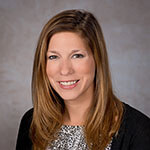A single audit is required if a school district has $750,000 or more in federal expenditures for fiscal years ending June 30, 2024. This audit ensures compliance with federal regulations and provides transparency regarding the use of federal funds. This article will delve into the essential components of a single audit, emphasizing the Schedule of Expenditures of Federal Awards (SEFA) and best practices for grant compliance.
Schedule of Expenditures of Federal Awards (SEFA)
The SEFA serves as a critical document in the single audit process. It provides a comprehensive overview of federal financial assistance received by the district. Here are the key elements to include in your SEFA:
1. Award Details:
- List all federal financial assistance, including grants, loan guarantees, and direct appropriations.
- Specify the approved grant amount, Assistance Listing Number (AL), and project number or source code.
2. Expenditure/Revenue Information:
- Include prior years’ cumulative actual expenditures from federal sources.
- Document the current year’s cash or payment-in-kind received from federal sources.
- Record current year actual expenditures from federal sources.
- Report beginning and ending inventory and accrued or unearned revenue as of July 1, 2023, and June 30, 2024.
- Make necessary adjustments to ensure accuracy.
Ensuring Grant Compliance
To maintain compliance, follow these guidelines:
- Classification by program. Categorize grants by program and identify the federal department administering each program. Clearly state whether a grant is direct or flow-through, along with the flow-through agency (if applicable).
- Ensure accurate totals: Total by the federal awarding agency, i.e., the United States Department of Education, program, assistance listing, and clusters.
- Cluster identification: Ensure clusters are properly identified and totaled.
- SEFA notes. Add accounting policies to the notes section of the SEFA. Address any differences between the district’s SEFA and the Grant Auditors Report (GAR), and provide a reconciliation for differences between federal expenditures per SEFA and financial statement federal revenue.
Checking Your SEFA
To ensure accuracy in your SEFA, consider the following checks:
- Prior Year Check: Verify that the prior year’s accrued/unearned revenue and cumulative expenditures of current-year grants align with the prior year’s SEFA.
- Accounts Receivable Calculation: Calculate the fiscal year accounts receivable (accrued/unearned revenue) by adding prior year accounts receivable to the difference between year expenditures and receipts.
- Consistency with Financial Statements: Confirm that total federal expenditures per SEFA match total Federal Revenue per Financial Statements.
Schedule of Findings and Questioned Costs
If there are findings in your SEFA, each finding must include the reference number, federal program information, criteria or specific requirement, a condition found, cause/effect, questioned costs, management’s response, and a corrective action plan (CAP).
A CAP should be written on school district letterhead, be specific and action-oriented, and include steps, target dates, and contact information. If necessary, note dates for returning funds to the Michigan Department of Education. If there were prior year findings, each must be reviewed, and the current standing of the finding must be included in the report.
Ensuring a Successful Audit
A single audit is a critical process for organizations that receive federal funding, ensuring compliance with regulations and promoting transparency in the use of federal funds. The SEFA is a crucial component, providing a comprehensive overview of the federal financial assistance received by the organization. Organizations can successfully undergo a single audit by thoroughly preparing the SEFA, properly reporting findings, and maintaining quality control.

